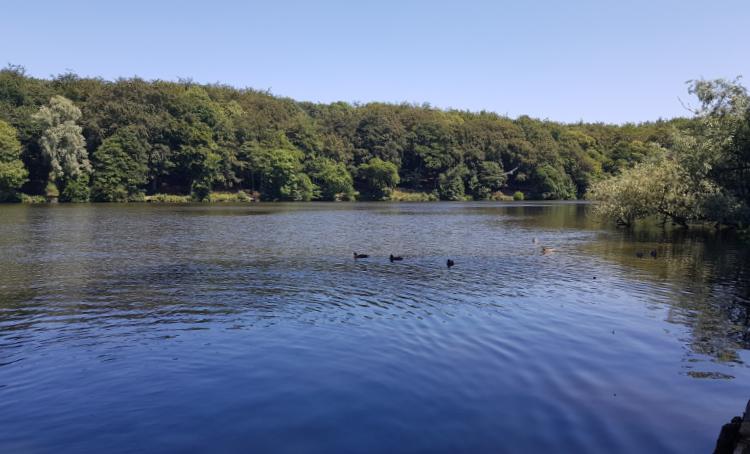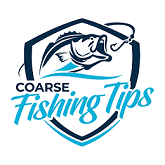
What Type of Water Should I Fish as a Beginner?
One of the first questions I asked myself when I first decided to go finishing was “Where should I go Fishing?”, Although I’m a beginner Angler, I know that different waters yield different results and may require specific tackle in order to fish it. More importantly; where am I allowed to fish? Can I just go and fish in the canal down the road? I’ll discuss all of this below.
Before you go and fish any water, the first thing to check is whether or not you’re allowed to fish that water. In the UK, just about all waters are owned either privately or by local councils, and you can rest assured; you’re going to need permission of some kind. The typical methods of gaining permission are:
- Being a member of the local club that allows fishing that water.
- Paying a day fee to a private owner.
To be safe, and avoid prosecution and a hefty fine, I would stick to the waters that are covered by your local membership. Some local Angling clubs allow you to buy a day membership.
The best way to find out which membership you need for a specific water is to call in to your local Tackle Shop and ask them, they usually sell the memberships.
I am a member of my local Angling club which grants me permission to fish at 8 still waters, 2 rivers and a canal; for an annual fee of £33. The still waters vary in size from relatively small ponds to large lakes; deciding what type of water you should fish as beginner can seem kind of daunting. So let’s take look at each type of water and what you could expect.
Small Ponds or Dams
These are my absolute favourite waters as a beginner. Because the ponds are usually quite small there’s an increased chance of catching as you’re never fishing too far away from a fish. Small waters are usually well stocked by the owners and offer up a variety of fish you could target from small Roach and Perch to larger Carp.
You can also adopt several techniques when fishing a small pond as the water is usually landscaped to incorporate reeds, Lillie pads, bulrushes, trees and of course open water.
This means you can use float or pole very effectively, or even light leger or feeder techniques. Just be careful not to over-cast if using leger and encroach on someone else’s swim. A swim is the area directly in front of the peg you’re using and to the middle of the pond.
A peg is a specific area on the bank that is to be fished from, often with a number to signify it’s a peg. On a small pond you’ll find anywhere between 5-10 pegs, sometimes more. If a peg is occupied, don’t try and squeeze in next to them, this is bad etiquette.
I like to get there early so that I can have a choice of the pegs.
For more information on deciding when to fish with Rod or Pole read – Fishing: Rod or Pole?
Larger Ponds and Lakes
Larger ponds and lakes not only offer more variety of fish but also much larger specimens. Generally speaking, the larger the water the larger the specimen, particularly Carp and Pike . However, a drawback of the larger water is that the fish are harder to attract and thus catch.
Lakes are usually the go to water for enthusiast Carp and Pike anglers who are looking for a big catch.
While it’s still feasible to fish on float or pole in larger waters, you’d usually find leger and feeder methods the go to tackle choice. This is because larger waters not only offer more expanse of water, they’re usually much deeper too. Leger and feeder methods not only allow for fishing at a greater distance but also a greater depth.
If you do want to fish on float or pole, most lakes still offer some great pegs that are suited to this, these are the pegs with nearby reeds etc, so choose the peg that suits your fishing method.
For more information on when to fish with Float or Feeder read – When Should you Fish with Float or Leger?
Rivers
By definition, if you remember your school days, a River is a body of water that is flowing towards another River, a Lake or an Ocean. The speed at which the River flows can differ greatly, not only day by day, but swim by swim. A peg situated just after a bend in the River is likely to be flowing faster than a peg before the bend.
Rivers can also rise and flow more rapidly for days after heavy rain due to inlets coming down in to the River from higher ground. A good time to fish a River is after a flood and when the water levels are beginning to return to normal.
The same can be said about a River than narrows. As the body of a River narrows and the water funnels in to the narrowing, the water speed will increase.
Rivers can offer up some fantastic species, from the usual suspects of Roach, Rudd and Perch to Barbel, Chab, Dace, Ide and even Trout.
A big difference from fishing a lake or Pond to a River is that then run for miles. If you get a feeding swim in a lake or pond and you catch a couple of fish, there’s a good chance that you’ll scare the rest of the shoal away, that shoal will move on around the lake and at some point, could end up back at your swim.
When river fishing, once a shoal moves on, they’re likely to continue down the River following the flow of the water, so once that shoal is, it’s gone; but another is sure to come along.. eventually!
Different species of fish favour different parts of the Water, for example; Carp tend to feed around the inside edge of a bend where the water is flowing slightly slower, whereas Barbel prefer fast flowing water; areas with over hanging vegetation are also often good for various species.
With regards to tackle, my recommendation would be to travel light so that you can move up and down the bank. Rivers are fantastic for targeting various species of fish so you could spend some time pole fishing up and down the River around areas with over hanging vegetation, or on a bend where a river narrows.
I like this technique and I spend time walking up and down the bank, feeding areas that I think are good spots, If I catch a fish in one spot, I’ll move down to the next spot. It’s important to stay low to try and not scare the fish when moving down the bank.
Switch to leger on wider Rivers to target fish that like the deeper water, but one this is for sure, you should use heavier tackle than you would on a Lake or Pond just to accommodate for the weight of the flow of water.
https://www.ukriversguidebook.co.uk/ is a great resource for rivers in the UK.
Canals
Without doubt, my go to choice when Canal fishing is pole fishing and experimenting with different depths and areas on the swim. Canals are usually pretty narrow and with a pole you very easily drop your bait anywhere you choose, from the near bank to the far bank.
The day before Canal fishing on pole I like to prepare several hook lengths, but also 2 – 3 of each hook length, it’s easy to get caught up and lose a hook on a canal due to debris on the bottom; having spare hooks lengths means you can get back in the water quickly. Having varying hook lengths means you can experiment with depth quite easily without having to mess with your setup.
I find feeding the swim little and often the best way to go on a Canal, firstly due to the flowing water dragging the feed away, but also, live maggots will quickly burrow in to the water bed. A little ground bait and a few maggots, little and often, is what I find best.
Canal boats are an added variable when Canal fishing, if you see one coming get your line out of the water until it’s passed, the last thing you want to do is hook a fish, that is putting up a fight, when a boat is about the pass by.
The boats will also churn up the water bed, so feeding the swim after every couple of boats that pass by is a good rule of thumb.
Smaller fish, particularly Roach, are often in abundance in a Canal, but it is possible to hook some great fish; Chubb, Rudd and Perch to name a few.
My preference is usually to fish the far bank, especially in busy areas where walkers, runners and cyclists are passing by frequently, as they will scare the fish to the far side.
For more information on the type of fishing float to use read – Which Fishing Float Should I Use?
